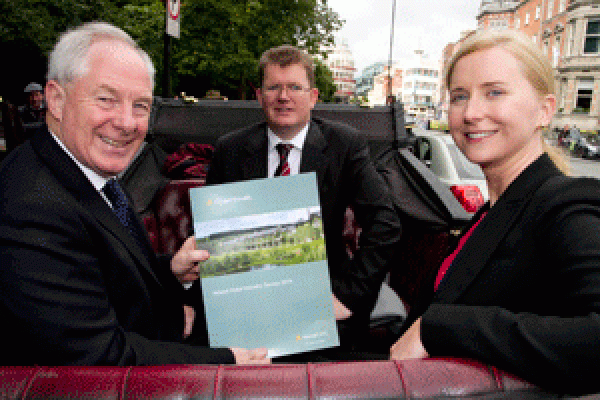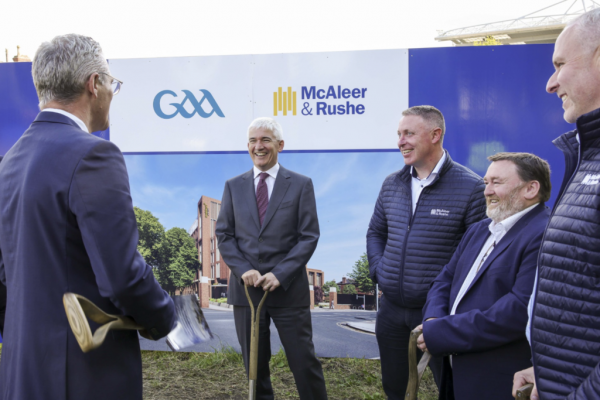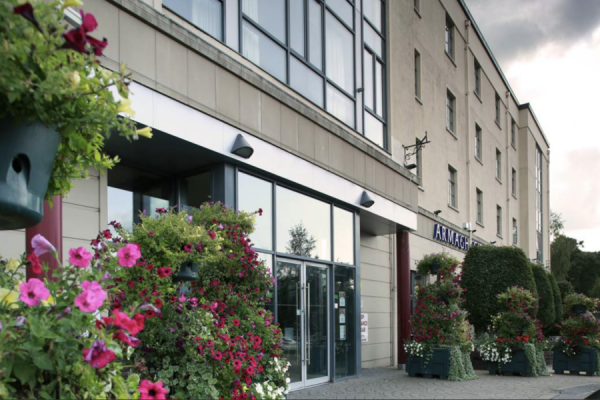Dublin hotels are booming, with average room rates 40 per cent higher in the capital than in the Western Seaboard region. According to research released today by Crowe Horwath, all key performance metrics have improved on 2012 figures, with Dublin performing the strongest of all regions.
Average room occupancy in Dublin is now at 76.3 per cent, marginally below previous peak levels of 76.8 per cent, while the average rate charged for a room in Dublin is now €90.73. Although this is some way off the peak rate in Dublin of €116.59 in 2007, it is still 40 per cent higher than the average room rate of €64.51 achieved by hotels in the Western Seaboard region. “There are a number of key factors driving growth in the hotel sector: the turnaround in the Irish economy, the improvement in Irish consumer sentiment and the continued increase in overseas visitor numbers. All have contributed to the demand for hotel rooms, which, in turn, has driven sector growth," said Aiden Murphy, recovery and restructuring specialist with Crowe Horwath. "Although the Irish hotel sector has managed to regain some of the ground lost during the economic downturn, particularly in Dublin, there is still work to be done nationally to reach the peak performance of 2007. Despite room sales increasing in 2013, room rates are still some 21 per cent below the peak levels achieved in 2007.”
There has been an increase of 3.7 per cent on the average price of hotel rooms across the board, with Dublin largely driving this result it appears. Occupancy levels have increased across all regions with Dublin hotels seeing the highest occupancy level (76.3 per cent versus 60.1 per cent Midlands and East) along with the highest year-on-year increase in occupancy levels (2.4 percentage points versus 1 percentage point in the Western Seaboard region). "These figures indicate that each hotel bedroom in Dublin is occupied on average 280 nights per year versus an average occupancy of 220 nights per year in Midlands and East. Dublin is also enjoying a significant number of nights where full occupancy is achieved," according to the report.
The Midlands and East recorded the lowest occupancy of the four regions (60.1 per cent versus 76.3 per cent in Dublin). This indicates that oversupply continues to exist in this region and competition between hotels is strong. Moreover, as many hotels in this region are not located in traditional tourism hubs, they are reliant on the improving domestic economy to help lift demand. Four-star hotels and Three-star hotels, which account for 88 per cent of hotel stock, have recorded contrasting performances over the last three years. Four-stars successfully increased their room sales thereby generating a stronger recovery of profit. While three-star operators increased their reliance on food and beverage spend, which, because of higher associated direct costs and payroll, has meant a slower profit recovery. "With food and beverage spend contributing to over 55 per cent of total revenue, both [Four Star] and [Three Star] hotels are vulnerable to any changes in this area. This also indicates that competition for wedding and banqueting events remains strong," according to the report.
The key findings of the 2014 survey are:
-Continued growth in average occupancy, up 2.1 percentage points to 65.9 per cent in 2013 from 2012 (from a low of 59.4 per cent in 2009)-Average room rate up €2.77 to €77.49 with room sales now at 79 per cent of 2007 peak levels -Further recovery predicted as number of investors looking to purchase prime-located hotels continues to increase-Rising operating costs (payroll, utility, property rates, food costs and competition) is a key challenge for hoteliers in 2014, with utility costs now accounting for 6.3 per cent of hotel revenue and being 1.7 percentage points higher in 2013 than 4.5 per cent recorded during peak year of 2007-The North American market performed particularly well in 2013 with an extra 14 per cent or 141,000 North American visitors travelling to Ireland in 2013. This market is traditionally associated with higher spending guests who typically stay longer-Increased competition with other sources of accommodation; guest houses and self-catering accommodation gaining market share-Positive outlook overall with 80 per cent of respondents anticipating a year-on-year increase in total revenue in 2014
Pictured are: Michael Ring, Minister of State at The Department of Tourism; Aiden Murphy, recovery and restructuring specialist with Crowe Horwath and Anne Walsh, director at Crowe Horwath.








